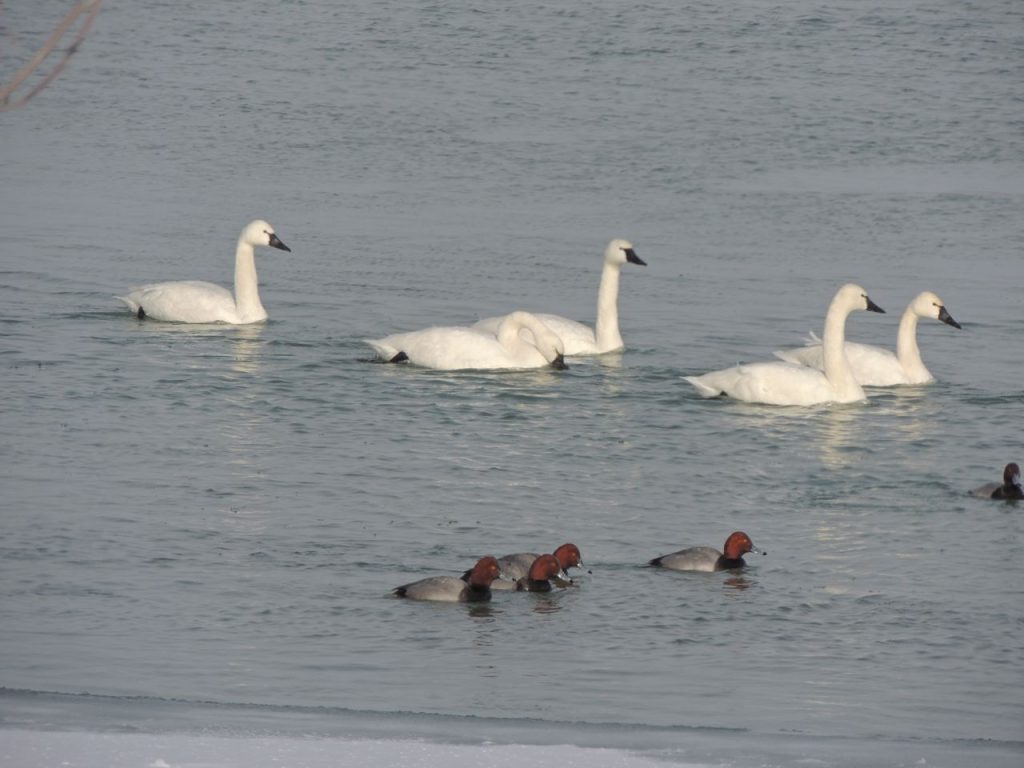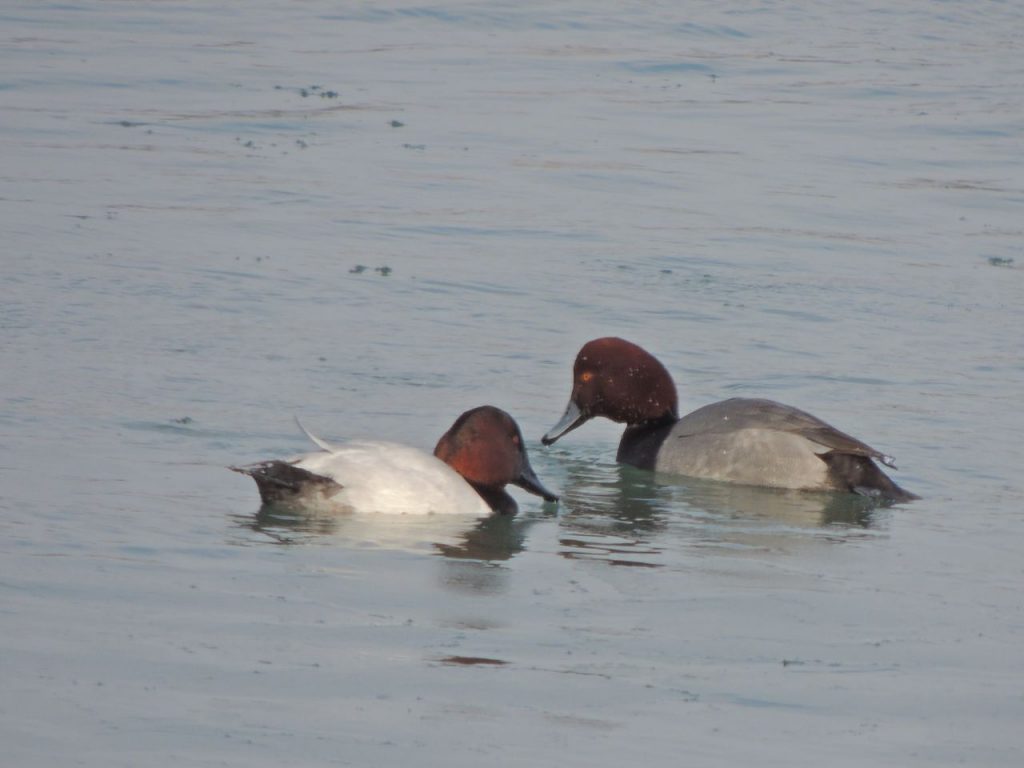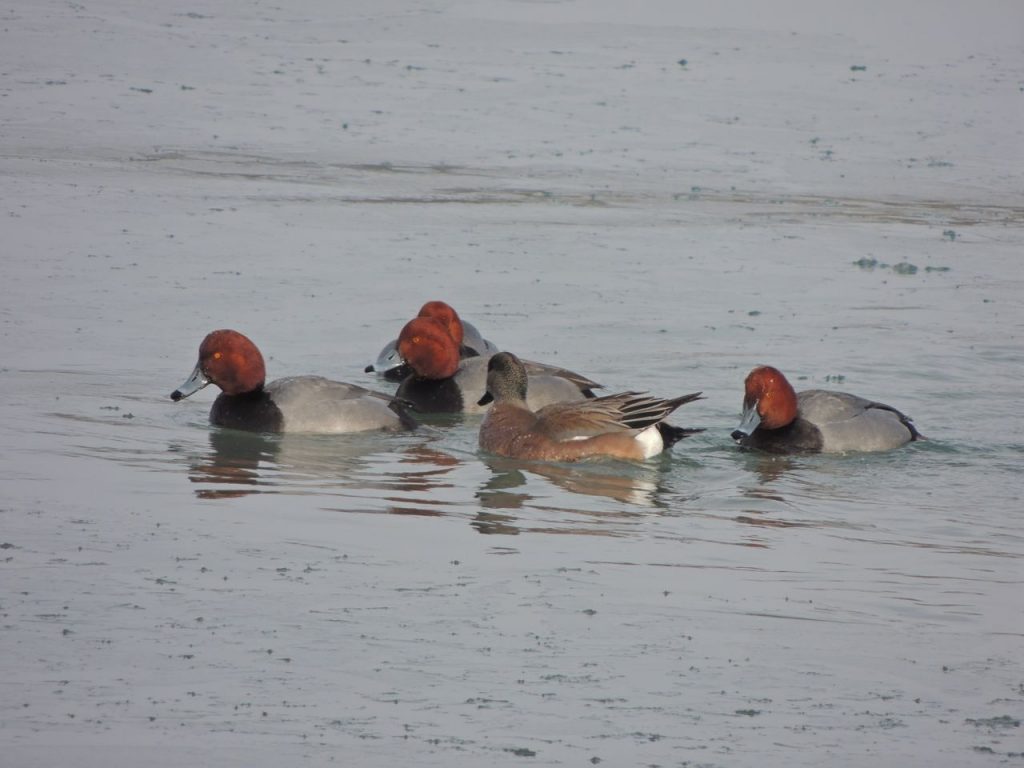January 5 2018. Fort Erie, ON. My day’s errands took me close enough to the City of Niagara Falls that I decided to take a drive along Niagara Parkway, as the road that parallels the Niagara River is known. I went to see what ducks, geese and swans were around. The road passes close enough to the falls to allow me to see what all the recent media fuss was about. It is bitterly cold and has been for several days and the press seems to think the falls have frozen over. Maybe so on the American side, although there was too much spray to tell, the Canadian falls certainly had not.
Regular readers (particularly those with a good memory) will recall (and locals will know) that the Niagara River is not so much a river as a mighty sluiceway that connects Lake Erie to Lake Ontario (and featuring a spectacular 100M drop along the way) and that sooner or later pretty much all of the waters of the Great Lakes basin find their way along it; a formidable torrent and a good place for waterfowl. The river never freezes over.
The Niagara Parkway is a pleasant drive at any time, there’s always something to look at. Upstream it ends at Fort Erie with Buffalo opposite on the American side; border towns.
I had no expectations of finding any unusual waterfowl and that’s just the way it went. There were many Common Goldeneyes, Buffleheads, Red-breasted and Common Mergansers, as there should be. I was a little surprised at the number of Tundra Swans, perhaps one or two-hundred. I suppose it was just in my imagination that all Tundra Swans spend the winter along the Atlantic coast and that come March they make their way to our local waters on the first leg of their journey north. Seems I was wrong, some hang around on the Niagara River.

I got much pleasure from of the small flotillas of Redheads and Canvasbacks gathered along the shoreline. I stopped to watch one Canvasback in particular because I thought I could get a good photo of it, and maybe I did, but then I noticed a single American Wigeon muscling in with the others and almost bullying its way around for no apparent reason. Not sure why but I was quite smitten by it perhaps because it was different and quite handsome in its chestnut and grey. See what you think. For no really good reason the wigeon was my Bird of the Day, just different I guess.


Thanks for blogging!
Would you explain how to spot the differences between Tundra & Trumpeter Swans sometime, please?
I trust I’m not the only one having trouble with IDing them 🙂
Tricky to distinguish between them. Trumpeters are larger by a bit – maybe 10-20%. I think they hold their necks more vertically. That black patch extending from the bill to the eye, on the trumpeter is blacker and appears larger encompassing the eye whereas on the Tundra a little yellow patch in front of the eye makes for an apparent break on the eye-patch. Of course they sound quite different, the trumpeter bellows, the tundra coos.
Very enjoyable read (again) for a number of reasons:
1. We are visiting Toronto for a few days in May on our way home from a Tokyo-Vancouver cruise and hope to make a day visit to the Falls.
2. Your “Redheads” look eaxactly like our Common Pochards and we saw plenty yesterday morning at a local reserve near Motril in Andalucia, Spain.
3. All of a sudden, out of the blue, we found 6 European Wigeon which were most unexpected and looked absolutely gorgeous with the sun shining on the two males.